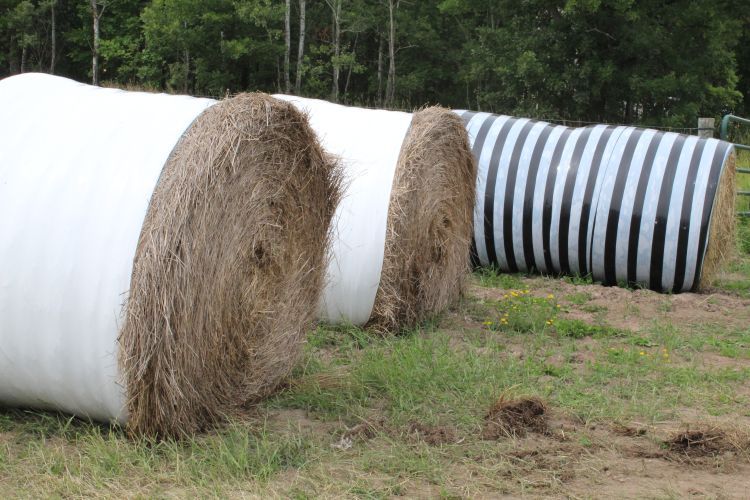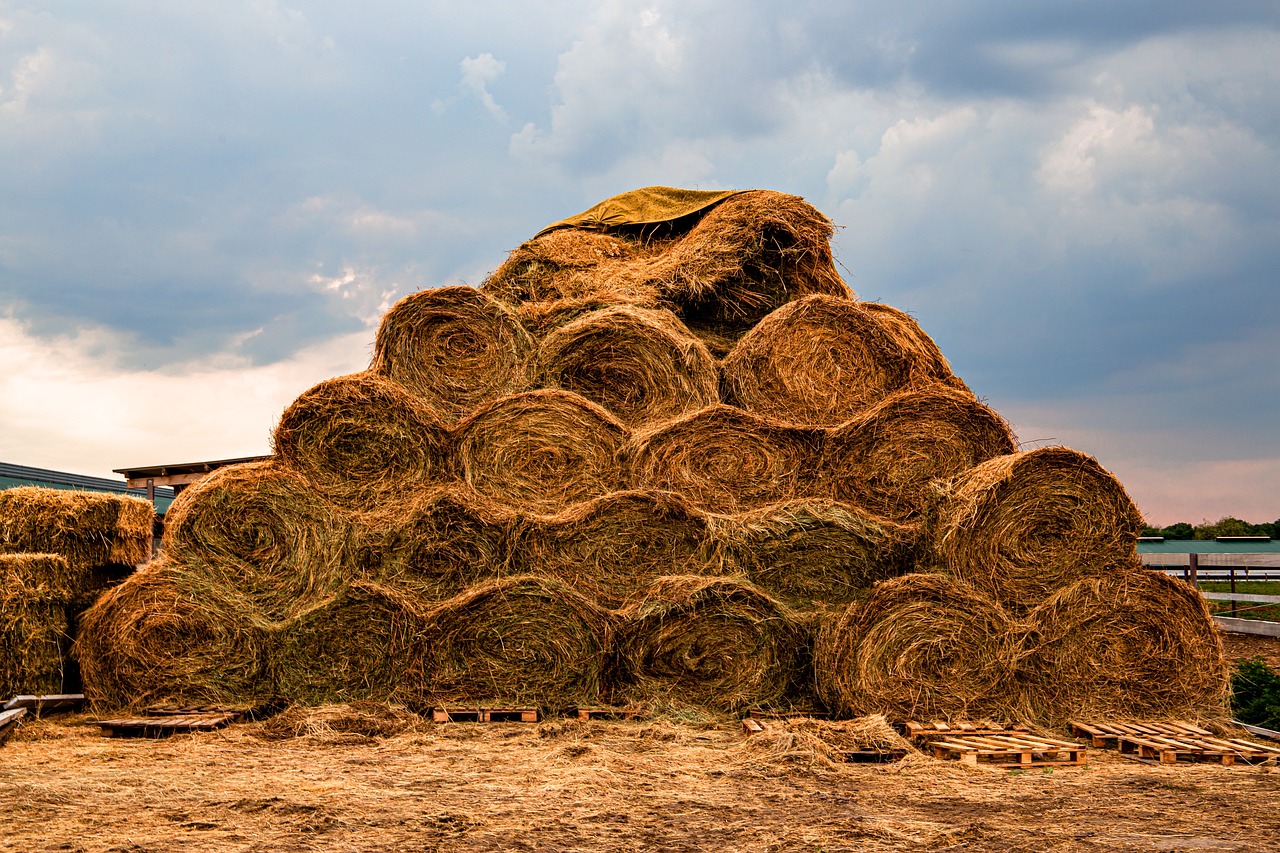
Source: Michigan State University Extension, Michelle Sweeten
Updated from an original article written by Jerry Lindquist.
In need of more hay? Protect what you have first.

The dry weather has left most livestock producers in the Midwest scrambling for more hay. First cutting hay yields were down in many areas of Michigan, and if the dry weather continues, total hay yields for the year could be less than 50 % of normal production. To feed ruminant animals such as beef cattle, sheep and others through the winter season, many livestock farmers are looking for ways to stretch their feed resources.
Before livestock farms begin buying hay, they should look at their current storage system to determine if they can make changes to be better able to utilize the hay they already have. Properly made and stored round bales can minimize storage losses and maintain hay quality. Currently, Michigan Forage Council members report yields of 40% to 60% less than normal around the state. If hay yields on a farm are 50% less because of the weather and the farm does not normally cover all their round-baled hay, they can reduce this shortage by covering their hay. Increasing moisture protection for outdoor stored net-wrapped round bales will save quality as well as for twine-tied bales. According to Oklahoma State University Extension, “the value of a storage system depends on the projected hay loss and the price of the hay when sold or used.”
Hay loss is a factor of the amount of moisture the hay is exposed to:
- Rainfall, snow, dew or ground moisture.
- How long it is exposed.
- The air temperature during the storage period (higher temperatures lead to greater losses).
- The type of hay (the more digestible the hay is for animals, the easier it is for bacteria to thrive and spoil the hay).
University research has revealed that round-baled twine-tied hay sitting on the ground uncovered will suffer an average total loss of 20% to 35%. Net-wrapped round bales have become popular, and many assume that net wrapping protects the bales from rainfall. Net wrapping makes the bale surface smoother and denser so it can shed water, but the advantage is not significant. The University of Kentucky trials found net-wrapped bales still lose 15% to 25% of the hay (dry matter basis) on average when stored outside. Though some of the rain runs off the net-wrapped surface, enough soaks into the outer layer of the hay to cause deterioration. The water also runs to the bottom of the bale and is absorbed there where it contacts the soil surface which causes spoilage.
The best way to reduce round bale hay spoilage is to keep water off them and break the contact with the soil so the bales do not draw moisture from the ground.

The same University of Kentucky study analyzed various forms of hay storage and found some noteworthy results. Putting the bales inside under a roof is the best option, whether a steel roof pole barn, older wooden barn or hoop barn. Total dry matter losses of the hay are typically only 4% to 7% when stored inside out of direct contact with the ground. A new building is an investment that can pay for itself over the long term if hay is stored annually, especially with higher hay prices.
For short-term investors, plastic coverage offers protection in various forms. Renting an in-line plastic bale wrapper can protect dry round bales, with the Kentucky study reporting a similar storage loss compared with barn storage at 4% to 7%. For 2023, renting a wrapper can vary from $18.59 per bale if hiring someone to do baling and wrapping to $14.65 per bale if just renting the baler and bale wrapper. Covering stacked hay with plastic tarps on a pad of stone or porous material can keep the loss down to the same 4% to 7% loss if the tarp can be secured well enough against the wind to stay in place. Plastic bale sleeves slipped over the bale leaving each end open, diminishing rainfall and soil moisture entry, resulting in the same loss at 4% to 7%. Bale sleeves are labor intensive as they are put on by hand and are best utilized on smaller quantities of round bale. Read more about the economics of wrapping dry hay from Michigan State University Extension.
Putting un-covered bales stacked on top of one another in a pyramid shape with the bottom bales in direct contact with the ground suffered a 25% to 35% loss even though half the bales were off the ground. Net-wrapped bales on the ground suffered a 15% to 25% loss and pyramid-stacked bales on stone or a porous pad suffered a 13% to 17% loss.
Any method of protection is better than leaving the bale outside exposed to the weather. In a short hay year where all feeds will be high priced, covering what hay you already have is the most crucial step in determining ways to lessen the impact of the lower yields.







